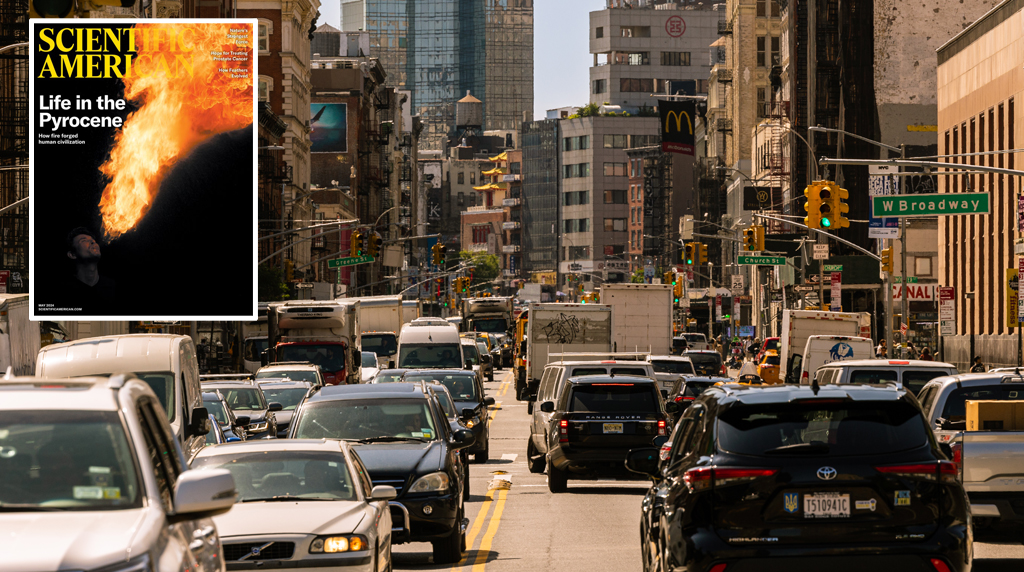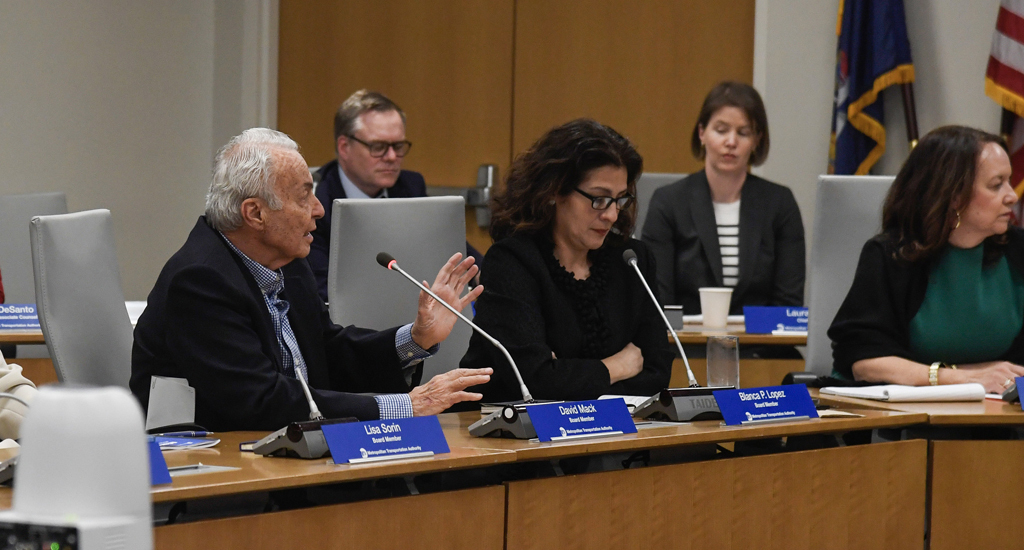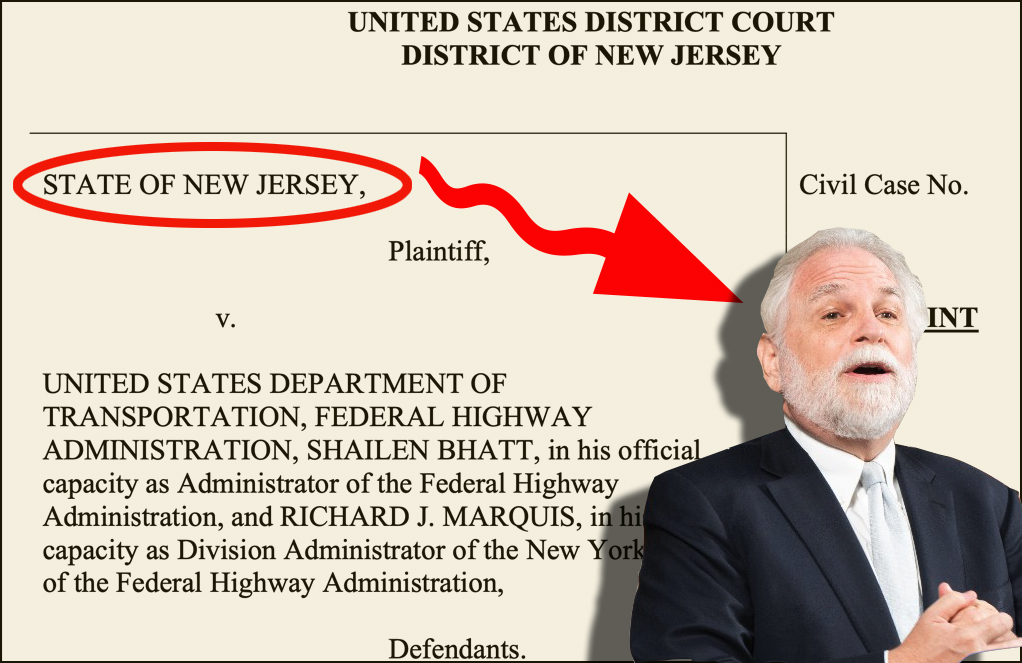Slow-Moving Bus Rapid Transit
10:51 AM EDT on April 19, 2006
 The Oil Drum has coverage of last night's bus rapid transit forum on the Upper East Side:
The Oil Drum has coverage of last night's bus rapid transit forum on the Upper East Side:
Despite the broad-based community support for faster, more efficient and higher quality bus services all that is being discussed by city/state/MTA officials is a STUDY that will examine 15 routes to pick JUST 5 in June 2007 and then (assuming the planets are aligned) to implement by late 2008.
Bus rapid transit is a great idea for New York City. We have some of the slowest buses in the world here in New York. The M34 lurches across Midtown Manhattan at 4 mph during so-called rush hour. And you can ride the train to Philadelphia in less time than it takes the M15 to run its 10-mile route from South Ferry to East Harlem.
The best BRT systems work by giving buses their own dedicated lanes separate from cars and trucks. Fares are collected on the platform before passengers board, reducing the waiting time at each stop. The vehicles are extra-long, clean-burning and have low floors, again, for fast boarding. Real-time information systems let passengers know exactly when the next bus will arrive and allow routers to manage more effectively. And buses have signal priority. If a bus is running late, traffic lights automatically turn green for it.
BRT has produced dramatic increases in bus speeds, reliability and ridership.
Bogotá, Columbia is one of the biggest successes. BRT has been a key part of this city of seven million's rapid transformation from a traffic-choked disaster to a model of sustainable urban development.
BRT is an ideal solution for New York. It would simultaneously allow our surface streets to move more travelers while decreasing traffic congestion. Plus, it's relatively cheap to implement. And yet attendees of last night's forum came away with the impression that BRT is moving too slowly in New York. Why is that?
An MTA source working on a part of the BRT in the Bronx study tells me that the initiative is being stymied by New York City Department of Transportation traffic engineers. To make BRT work, lanes of roadway that are currently dedicated to automobiles would have to be given over to buses. My MTA source says that DOT simply doesn't want to give up its roadway capacity to buses. So the agency is doing what it can to nibble away at the project, slow it down, and kill it.
This account of DOT intransigence has been confirmed by an engineer at a private consulting firm that has also done work on the city's BRT study. Both sources are still working on the project and have asked that their names not be used.
The Oil Drum reports that community support for BRT was strong at last night's Upper East Side forum. It's hard to find an elected official who opposes BRT. Increasingly, it seems that the biggest barriers to BRT are being erected within the city's transportation bureaucracy itself.
In the amount of time that has been spent studying BRT, a quick-and-dirty test run could easily have been set up along First and Second Avenues in Manhattan. To get BRT running you don't have to lay track or dig up the streets. It could be tested with little more than paint, signs, and plastic cones. No mass transit system is cheaper and easier to get going. Sure, there would likely be a fight on the community board level about the loss of some parking spaces. But that kind of opposition could be easily overcome if Mayor Bloomberg simply said that this was an important project for the future of the city and something that he wanted to make happen.
In fact, Bloomberg has said just that. On July 11, 2001, the long-shot mayoral candidate issued a campaign position paper on New York City transportation called "Untangling Traffic." The paper is filled with great ideas and very much worth revisiting. If elected Mayor of New York City, businessman Mike Bloomberg promised to do the following:
- As Mayor, I would give one person—reporting directly to me—the authority to coordinate the city's traffic policies and all other transportation-related issues. We must make one person accountable for all peoples' everyday experience in getting where they want to go.
- As Mayor, I would work with the Governor and the state Legislature to transfer the NYCTA to the City... when it comes to subways and buses on the streets of New York City, the Mayor should be calling the shots. Period.
- I also would... establish a "Subway on the Surface" on the East Side of Manhattan. Introduce "high-speed" limited-stop bus service along an enforced semi-dedicated right-of-way on First and Second Avenues.
The Mayor supports bus rapid transit, the community wants it, it's relatively inexpensive to get going, and it would make our surface streets vastly more efficient and functional as people-movers. Over the last decade in New York City, a lot of great transportation initiatives have been studied, literally, to death with very few practical results: Truck routes, Safe Routes to School, Downtown Brooklyn Traffic Calming, the list goes on. Bus Rapid Transit isn't going to do New Yorkers any good if it ends up as yet another thick volume collecting dust on a book shelf in the DOT archives.
Stay in touch
Sign up for our free newsletter
More from Streetsblog New York City
Deal Reached: Hochul Says ‘Sammy’s Law’ Will Pass
The bill, though imperfect, has been four years in the making.
Komanoff: A ‘Noise Tax’ Can Ground NYC Helicopters
A proposed $400 “noise tax” on “nonessential” flights is a start — and it will work.
Thursday’s Headlines: Welcome to the War on Cars, Scientific American
Our favorite story yesterday was this editorial in an unexpected place. Plus other news.
Meet the MTA Board Member and Congestion Pricing Foe Who Uses Bridges and Tunnels For Free Every Day
Mack drives over the transportation authority's bridges and tunnels thanks to a rare perk of which he is the primary beneficent.
Randy Mastro Aspires to Join Mayor’s Inner Circle of Congestion Pricing Foes
The mayor's reported pick to run the city Law Department is former deputy mayor under Rudy Giuliani and notorious foe of bike lanes and congestion pricing.




